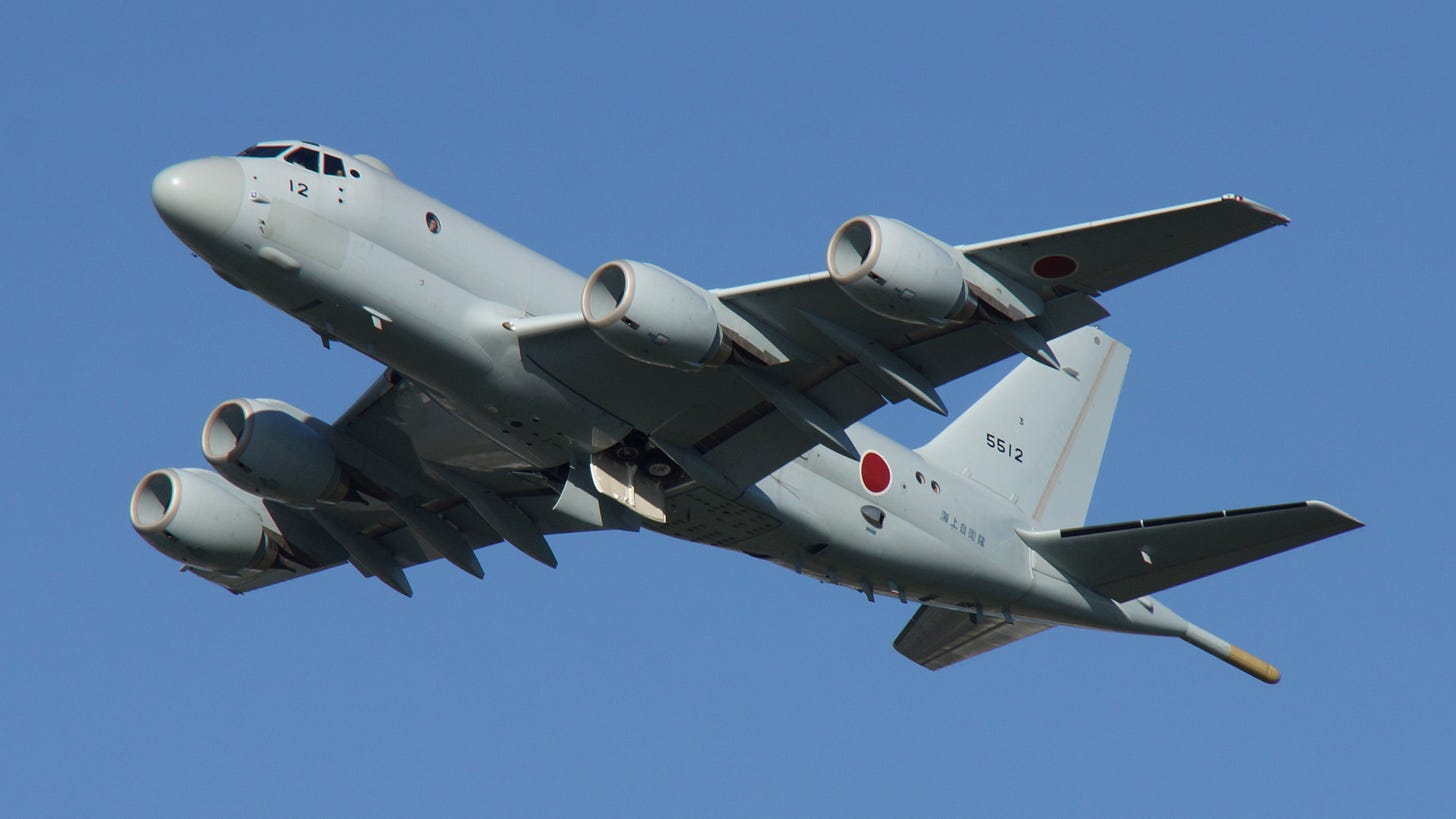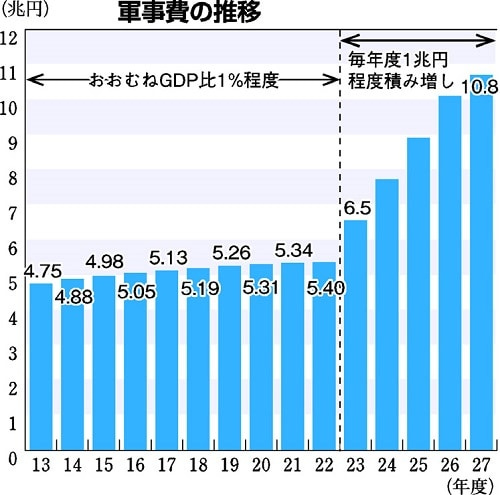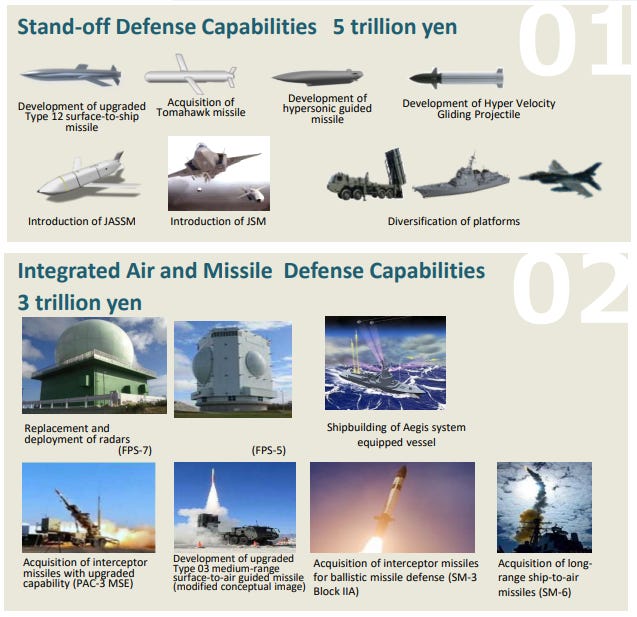IHI Corp (7013) - Part 2
Aligning with Japan's most critical needs: defense and energy security
Disclaimer: The information in this article reflects the personal views of the author and is provided for informational purposes only. It should not be construed as investment advice. The author holds a position in the security at the time of publication. Investment funds or other entities with which the author has consulting or advisory relationships may or may not hold a position in the security/securities discussed. The views expressed are solely those of the author and do not reflect those of any other parties. Readers should conduct their own research and consult a qualified financial advisor before making any investment decisions.
In Part 2, we’ll dive into IHI’s defense and power generation businesses. These contribute to Japan’s national security and energy needs, aligning with the country’s most critical long-term interests. We’ll wrap up with a discussion on valuation and risks, including IHI’s exposure to the recently announced Trump tariffs.
Defense business
IHI’s defense segment breaks down as follows:
60-70% from military aircraft engines. IHI covers all fighter jet models used by Japan’s air force.
15-20% from rocket motors (propulsion system for missiles), and
10-15% from gas turbines for navy vessels and other defense equipment.
Japan’s air force operates Japanese variants of the U.S. F-15, F-16, and F-35. Mitsubishi Heavy Industries (MHI) manufactures these aircrafts under license from Boeing and Lockheed Martin. IHI produces the engines under license from GE and Pratt & Whitney (one exception is the F-35: IHI supplies components to P&W but does not assemble the engines in Japan ) and handles maintenance & repair for all engine models.
In addition to licensed production, IHI also develops proprietary engines. It manufactures the engines for the Kawasaki P-1 maritime patrol aircraft and the T-4 training jet using its own designs. IHI also produces the T700 engine for military helicopters under license from GE.
Today, Japan is on a path to increasing its defense budget to 2% of GDP by FY2027 (from ~1% historically). The chart below shows the projected increase in defense spending (blue bar, JPY trillions). To get to the 2% GDP target, Japan will increase its spending by a trillion yen every year until 2027. Cumulative spending will be JPY 43 tn between FY2023-2027 compared to JPY 27 tn between FY2019-2023.
The Pentagon has requested Japan to raise its defense spending to 3% of GDP. Although Japan has so far brushed this aside, I think this remains a potential catalyst, with some experts viewing 3% as a realistic target for Japan (now that NATO is also reportedly discussing 3% as its next goal).
The U.S. has been actively promoting so-called “friend-shoring” of the defense supply chain. Recognizing that its own industrial capacity has fallen much behind China’s, the US has been actively trying to leverage the industrial capacity of its allies.
The U.S. ambassador to Japan urged Tokyo on Tuesday to take a greater role in developing, producing and supplying weapons "to enhance our collective security" amid conflict in Ukraine, Gaza and elsewhere…The United States alone can no longer supply all democracies, Ambassador Rahm Emanuel said during a visit to a Mitsubishi Heavy Industries' F-35 fighter jet factory. He stressed the importance of stronger defense industry cooperation between the allies…The countries will now look at what Japan can co-license, co-produce and co-develop, Emanuel told reporters. "It's extremely exciting to bring Japan's industrial capability, its engineering smarts, onto the field on behalf of the alliance," he said.
- Mainichi Shimbun (link)
This “friend-shoring” push also aligns with Japan’s own incentives. Japan wants to participate in weapons manufacturing so that technological learning happens within its own border. The F-2 program (Japanese variant of the F-16 fighter) resulted in a 60% and 40% production split for Japan and US.
Raising the defense sector profit
Decades of Japan’s pacifist military policy led to many of the country’s defense contractors withdrawing from the business (it is said that in the past 20 years, over 100 defense contractors have withdrawn). As Japan looks to re-militarize, it finds itself with an inadequate domestic defense industry which has suffered from decades of underinvestment.
To rejuvenate the defense sector, Japan has committed to increasing the sector profitability. In the past, the standard profit margin on defense contracts was 8%, but contracts from FY2023 onwards will be under a new structure (below chart, right side). Effectively, the maximum operating margin will be increased to 15% from 8%, with an inflation cost adjustment component.
Missile spending explodes (no pun)
Japan’s spending on “Stand-off defense capabilities” will increase from JPY 200 bn to 5 tn (25-fold increase!) and “integrated air and missile defense capabilities” will increase from JPY 1 tn to 2 tn (Note: MoD’s published figure is 3 tn, which is larger than IHI’s 2 tn, but maybe IHI is referring to its own addressable market within the segment).
The former category has a more pre-emptive or retaliatory focus (e.g. long-range cruise missiles, anti-ship and land attack missiles) while the latter involves more defensive focus (intercepting oncoming missiles and aircrafts).
IHI’s rocket motors serve as propulsion system for missiles. Currently, IHI is supplying mainly the latter category of defensive missiles such as the SM-3 and PAC-3 (“Patriot missiles”). However, the 25-fold budget increase on the "offensive side” can become a significant opportunity if IHI can capture a portion of it in the future.
Easing export restrictions
Historically, Japan maintained very strict arms export controls. In 2014, the Abe administration replaced the existing framework to support the growth of the country’s defense exports. Since then, Japan has gradually relaxed these restrictions.
IHI has capitalized on this shift. It previously produced F-35 engine components solely for Japan, but as of April 2024, it began manufacturing engine modules for export to global F-35 operators across 18 countries. Japan has also eased export rules to allow the replenishment of U.S. Patriot missile stockpiles depleted by the war in Ukraine.
Further relaxation of export controls is expected, potentially unlocking growth opportunities in areas where Japan is seen as a technological leader, such as ships and maritime patrol aircraft. News: Italy is reported to be interested in purchasing the Kawasaki P-1 maritime patrol plane.
Finally, it’s worth noting Japan’s participation in the Global Combat Air Programme (GCAP), a joint project with UK and Italy to develop a sixth generation fighter jet by 2035 (with Saudi Arabia potentially joining). A Japanese consortium, including IHI, will hold a one-third stake in the program. What makes this significant is that Japan is stepping up as a full development partner, rather than just importing or producing US fighter jets under license.
(Side note: the most interesting thing is Japan chose European partners instead of the US — reportedly due to the US's inflexibility and unwillingness to treat Japan as an equal partner, and Japan’s desire to diversify its defense partnerships. Given what we’ve seen during Trump’s second term so far, this has proved to be a wise decision for both the Japanese and the Europeans…)
The key take-away here is that Japan is ambitious, and its main defense contractors including IHI will play a key role in supporting Japan’s climb up the defense value chain.


![April Fools 2024] Mitsubishi F-2 Super Kai - An Unreal Overpowered Zero - Passed - War Thunder — official forum April Fools 2024] Mitsubishi F-2 Super Kai - An Unreal Overpowered Zero - Passed - War Thunder — official forum](https://substackcdn.com/image/fetch/$s_!zno9!,w_1456,c_limit,f_auto,q_auto:good,fl_progressive:steep/https%3A%2F%2Fsubstack-post-media.s3.amazonaws.com%2Fpublic%2Fimages%2Fa3c93215-ac73-4f83-a8de-d4a7bb4431fb_966x720.jpeg)





